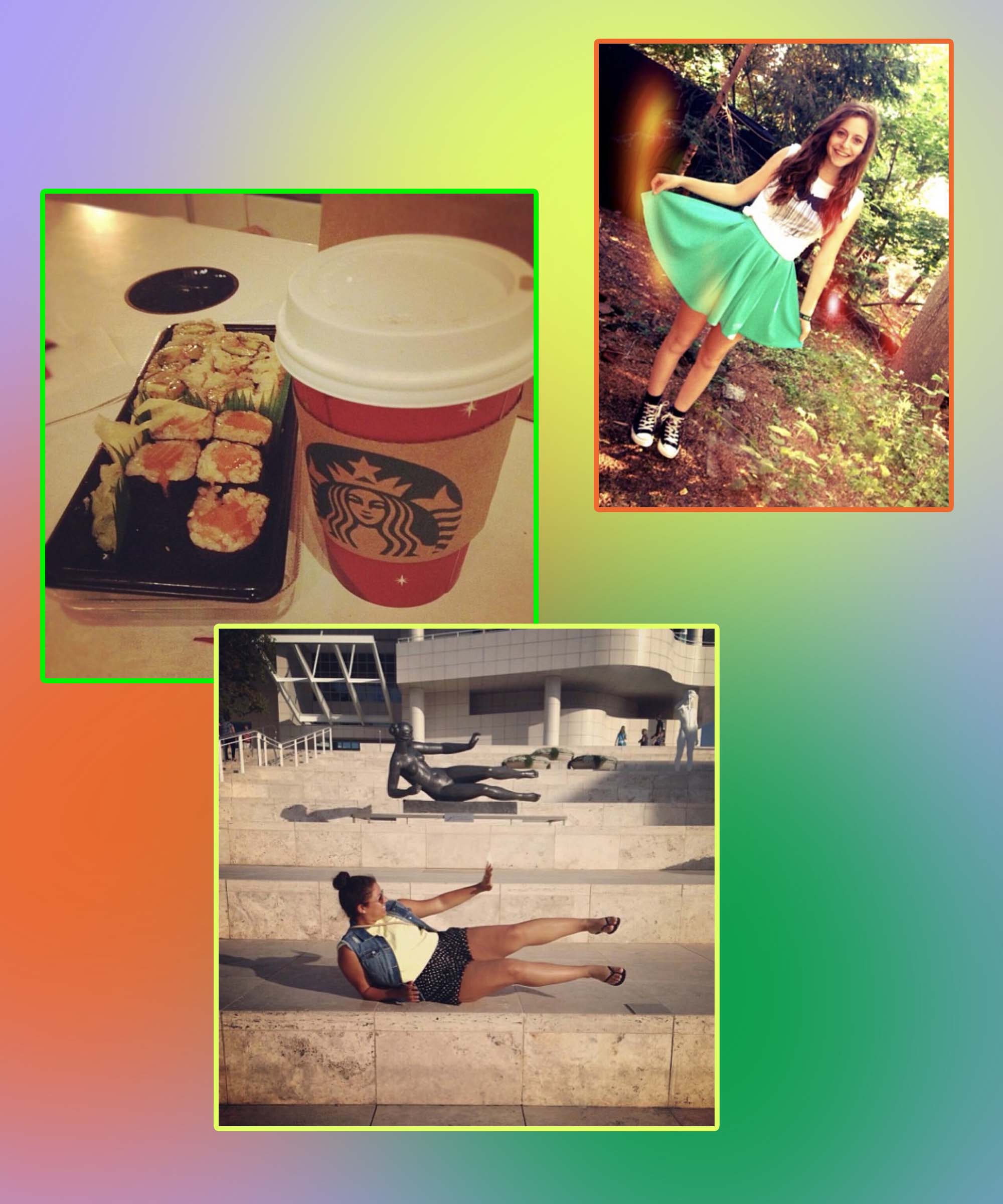
Today we’re going to take our stupid walk for our stupid mental health down memory lane back to 2012. You pull out your new iPhone 5 from the pocket of your skinny jeans and unlock it. There is, and I know this sounds absolutely wild, a physical home button. You click the brown Polaroid camera logo with “Insta” written in the top left corner. Up comes your Instagram feed, a chronological stream of posts from accounts you follow. You check your own profile, and see that below your recent duck-lipped selfie, 10 of your friends’ usernames changed to read “11 likes”. What a rush. Back on your feed, there are no ads. No stories. No reels. And absolutely no pictures of Khloe Kardashian trying to sell you that weird detox tea. Instead, it’s sepia soaked photos, absolutely garish vignettes and thick white borders for when you dare to post a non-square image. The chokehold the Valencia & X-Pro II filter had on us is a phenomenon I will never truly understand.
2012 was an eventful year for Instagram. Just two years after launching, Facebook purchased it for $1 billion. It became available to Android users on the Android Market, renamed Google Play store that same year. Over 80 million users were on Instagram by July 2012, living it up before the world ended. Remember that? Fun times.
Underneath the thick fog of filters were the photos that now make us laugh and question, “Why in the hell did I post that?” People seemed to love capturing and sharing the most mundane of moments. In response to my questions about what their posts looked like 10 years ago, my friends sent me the following photos: an empty peanut jar with the caption “Disaster😭”; an eyeball closeup (that, my friend tells me, required the use of their phone’s temporarily blinding flash to take); an extensive series of photoshopped pictures that depicted my friend cozied up to Derek Jeter (which infuriated his wife to the point of blocking her account). Not only did we post these pictures, we didn’t think twice about it. Instagram in 2012 was absolutely unhinged. I miss it.

While movements such as “casual Instagram” have emerged in recent months in hopes of reviving this carefree attitude when it comes to what we post, it doesn’t quite hit the same. In fact, casual Instagram has become quite the opposite. TikTok creator @cozyakili explained in a viral TikTok how “casual instagram is an even greater performance,” full of highly curated photo dumps and candids. This leads me to question: Despite the widespread desire to return to the chaotic simplicity of the early days of Instagram, why didn’t casual Instagram work?
There was a sense of freedom to Instagram in the early 2010s that hinged on a collective agreement that what we posted didn’t matter. That’s a luxury that no longer exists. In 2012, I could post a picture in my new American Apparel circle skirt topped with an artsy light leak. About 100 people saw it, 20 people liked it, and I moved on with my day.
Nowadays, the stakes are astronomically higher. Our Instagram profiles have become sources in our research, whether the subject is a major celebrity such as Rihanna or my mysterious local Amazon package thief. Going on a date? Check their Instagram. Making a new hire? Check their Instagram. Not over an ex? Check their Instagram — obviously from a fake account you made for snooping purposes. Knowing your profile could be subject to that kind of scrutiny, no wonder we’re all curating our feeds.

And, of course, business got involved. Alongside the rapid influx of new users on the platform was Facebook’s desire to maximize revenue and companies’ desire to increase their sales. Instagram first launched ads on the platform in 2013. As advertising offerings expanded to the likes of sponsored posts or influencer partnerships, companies invested millions of dollars to reach their customers. Brands developed roles dedicated to running and growing their Instagram accounts. Tech companies honed their craft of collecting and packaging user data for companies to buy. The Instagram influencer industry boomed. It became possible for influencers to make a living creating social media content. With the launch of the Instagram Shop in 2019, it truly became a marketplace of its own.
The influx of money left little to no room for the carefree attitude that inspires so much nostalgia today. How can we expect to make Instagram casual again when it’s become everything but casual? Wherever the users are, the sellers and advertisers follow. In marketing, it’s the age of meeting consumers where they are, and while I appreciate them coming all this way, I’d like to be left alone.
Like skinny jeans, the simple days of harsh filters and carefree posting are behind us. We’ve migrated to other platforms in an effort to once again experience the casualness of early 2010s Instagram. Luckily, if you find yourself craving some 2012 nostalgia, all you have to do is scroll down your profile and the memories are still there for you to enjoy. Unless you’re like me and deleted most of them out of embarrassment, but that’s a story for another day.
Like what you see? How about some more R29 goodness, right here?
The Story Behind Those Celebrity Prayer Candles
The Legacy Of "Call Me Maybe," 10 Years Later
Decoding Fashion TikTok’s Obsession With Clowns
from Refinery29 https://ift.tt/KsoUIbc
via IFTTT
